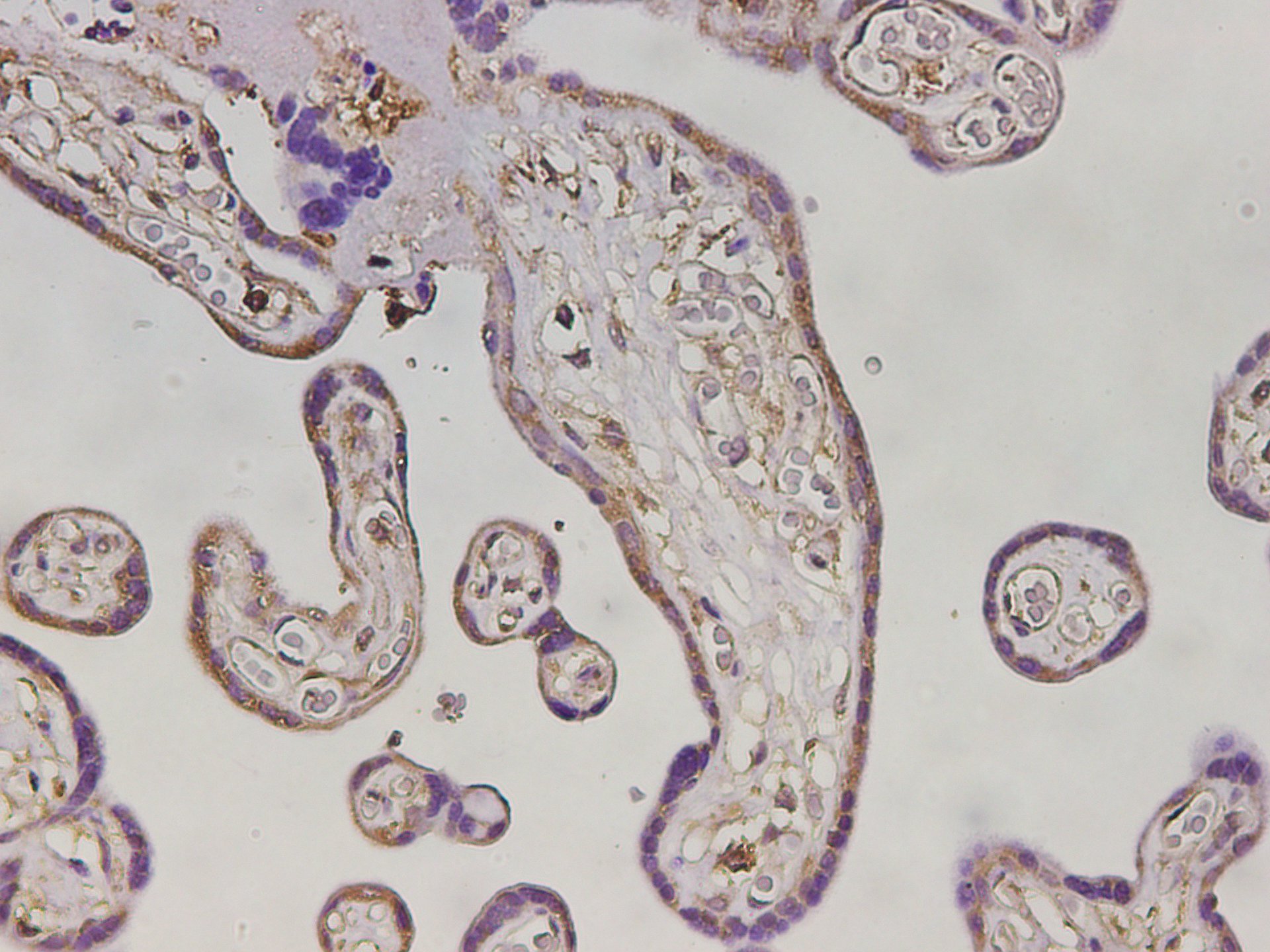MHCG Polyclonal Antibody
For reference only. Please follow the manual included in your kit for instructions.
Catalog Number
RD86701A
Product Name
MHCG Polyclonal Antibody
Catalog Number
RD86701A
Clonality
Polyclonal
Purification Method
Antigen affinity purification
Isotype
IgG
Host
Rabbit
Background
HLA-G Antibody (4H84) is an IgG1 κ mouse monoclonal HLA-G antibody (also designated HLA major histocompatibility complex, class I, G antibody, human leukocyte antigen (HLA) G antibody, 45 kDa transmembrane class I human leukocyte antigen G antibody, chromosome 6p22 gene complex class 1G antibody, placenta trophoblast marker antibody, or fetal derived placental cell marker antibody) that detects the HLA-G protein of mouse, rat and human origin by WB, IP, IF and IHC(P). HLA-G Antibody (4H84) is available as both the non-conjugated anti-HLA-G antibody form, as well as multiple conjugated forms of anti-HLA-G antibody, including agarose, HRP, PE, FITC and multiple Alexa Fluor conjugates. Major histocompatibility complex (MHC), human leukocyte antigen (HLA) molecules are cell-surface receptors that bind foreign peptides and present them to T lymphocytes. MHC class I molecules consist of two polypeptide chains, an α or heavy chain, and a non-covalently associated protein, β-2-microglobulin. Cytotoxic T lymphocytes bind antigenic peptides presented by MHC class I molecules. Antigens that bind to MHC class I molecules are typically 8-10 residues in length and are stabilized in a peptide binding groove. MHC class II molecules are encoded by polymorphic MHC genes and consist of a non-covalent complex of an a and b chain. Helper T lymphocytes bind antigenic peptides presented by MHC class II molecules. MHC class II molecules bind 13-18 amino acid antigenic peptides. Accumulating in endosomal/lysosomal compartments and on the surface of B cells, HLA-DM and -DO molecules regulate binding of exogenous peptides to class II molecules (HLA-DR) by sustaining a conformation that favors peptide exchange. The differential structural properties of MHC class I and class II molecules account for their respective roles in activating different populations of T lymphocytes.
Immunogen Information
Immunogen
Recombinant Human MHCG protein expressed by E.coli
Swissprot
P17693
Synonyms
HLA-G HLA-6.0 HLAG
Applications
Reactivity
Human
Tested Applications
IHC
Conjugation
Unconjugated
Dilution
IHC 1:1500-1:3000
Concentration
6mg/mL
Storage Buffer
PBS with 0.02% sodium azide, 50% glycerol, pH 7.4
Storage Instructions
Store at -20°C Valid for 12 months. Avoid freeze / thaw cycles.
